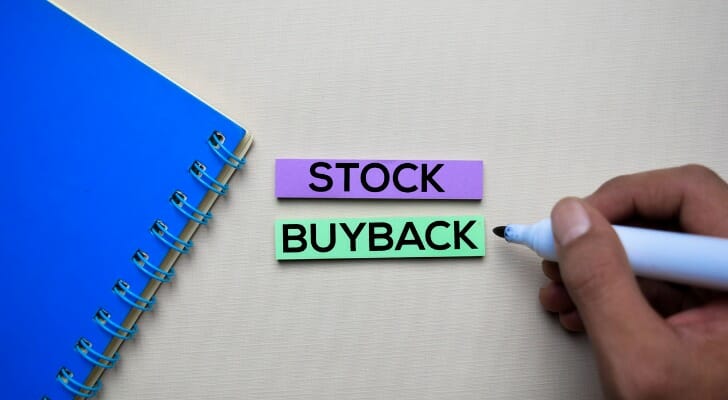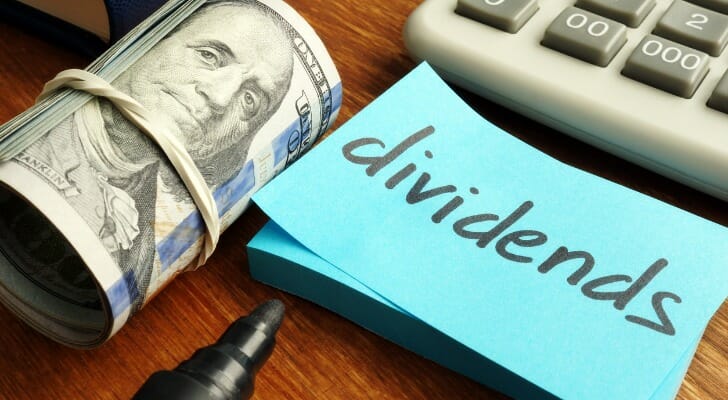 Stock investing can offer numerous rewards, including the potential to benefit from dividend payouts or buybacks. Both can increase investor returns but there are some significant differences in the tax treatment of stock buybacks vs. dividends. Whether it makes sense to utilize buybacks or dividend payments to shareholders can depend on a company’s overall financial strategy. In some cases, they may choose to do both. From an investor perspective, it’s important to understand what either one can mean for your portfolio. Given how many factors go into choosing between stock buybacks and dividend stocks, a financial advisor can offer invaluable advice on the matter.
Stock investing can offer numerous rewards, including the potential to benefit from dividend payouts or buybacks. Both can increase investor returns but there are some significant differences in the tax treatment of stock buybacks vs. dividends. Whether it makes sense to utilize buybacks or dividend payments to shareholders can depend on a company’s overall financial strategy. In some cases, they may choose to do both. From an investor perspective, it’s important to understand what either one can mean for your portfolio. Given how many factors go into choosing between stock buybacks and dividend stocks, a financial advisor can offer invaluable advice on the matter.
Stock Buybacks, Explained
Publicly traded companies list shares of stock on an exchange where they can be bought and sold by investors. This happens through an initial public offering, or IPO, and one of the main reasons companies choose to go public is to raise capital through the sale of shares.
A stock buyback occurs when a company decides to buy back its own shares from its shareholders. The company offers to buy back shares at current market value or even slightly above. This gives investors an incentive to agree to the buyback since they’re walking away with cash in hand.
Meanwhile, the company is able to reduce the total number of its outstanding shares in the market. The upside for the company is that typically, a buyback can help to boost the share price and improve profitability ratios, such as earnings per share (EPS).
There are different reasons for executing a buyback. In some cases, it’s done to try and increase the stock’s share price if there’s a belief that the company is undervalued in the market. And in other cases, the company may simply favor stock buybacks vs. dividends to return cash to investors.
How Dividends Work
Dividend payments represent a percentage of a company’s profits that are paid out to shareholders. A stock that pays dividends may do so monthly, quarterly, semiannually or annually. Whether or not an investor qualifies for an upcoming dividend payment can depend on the ex dividend date and when they purchased their shares.
Companies can choose to pay out dividends as cash or as shares of stock. When dividends are paid out as cash, investors can choose to use them as income or leverage them to purchase additional shares of stock. Dividend reinvestment plans or DRIPs can be used to automatically reinvest cash dividends into additional shares.
Not all companies offer a dividend. Growth stocks, for example, often don’t pay dividends because most or all of a company’s profits are being reinvested into expansion. More established companies that don’t necessarily need to reinvest in growth are often positioned to pay out dividends. The Dividend Aristocrats, for example, represent companies that have increased dividend payouts to investors for 25 years or more consecutively.
Tax Rules for Stock Buybacks and Dividends
 Stock buybacks and dividends are both subject to investment taxes. Since minimizing tax liability matters for keeping more of your returns, it’s important to understand how buybacks or dividends could affect your tax bill. With a stock buyback, profits realized on the sale of shares are subject to capital gains tax. Whether you pay the short-term capital gains tax or the long-term capital gains tax rate depends on how long you held the shares. Between the two, the long-term capital gains rate, which applies to investments held longer than one year, is more favorable.
Stock buybacks and dividends are both subject to investment taxes. Since minimizing tax liability matters for keeping more of your returns, it’s important to understand how buybacks or dividends could affect your tax bill. With a stock buyback, profits realized on the sale of shares are subject to capital gains tax. Whether you pay the short-term capital gains tax or the long-term capital gains tax rate depends on how long you held the shares. Between the two, the long-term capital gains rate, which applies to investments held longer than one year, is more favorable.
Dividends, on the other hand, are taxed as ordinary income. That includes dividend payouts received as cash as well as dividends that are reinvested to purchase additional shares of stock.
Aside from the rate at which they’re taxed, there’s another difference between stock buybacks vs. dividends. The taxes due on buybacks are deferred until capital gains are realized. With dividends, those payments have to be reported on your tax filing at the time they’re received.
Stock Buybacks vs. Dividends: Which Is Better for Investors?
Stock buybacks and dividends can have some pros and cons for investors. With buybacks, there’s more flexibility when it comes to timing and tax planning. If you’re offered a buyback, you can choose whether to accept it and when to sell shares back to the company. You can continue to benefit from compounding gains while you own the shares and, then sell when you’re ready.
With dividends, you’re subject to the company’s payout schedule. While you don’t have to take the cash from dividends, you do have to report those payments as income on your taxes each year. On the other hand, it’s important to consider why a company is initiating a stock buyback.
If it’s simply to offload unused cash that’s sitting on a balance sheet, that may not be cause for concern. But companies may use buybacks to try and drive up flagging prices, which could signal issues with its overall financial health.
How to Manage Stock Buybacks and Dividends
 Both buybacks and dividends can benefit investors and whether to invest in stocks that offer one or both possibilities can depend on your goals. For example, buybacks can be useful for building wealth in a tax-efficient way if you’re able to choose the timing for selling shares. Dividends can offer current income or allow you to increase your portfolio’s holdings if you’re reinvesting them for to purchase additional shares.
Both buybacks and dividends can benefit investors and whether to invest in stocks that offer one or both possibilities can depend on your goals. For example, buybacks can be useful for building wealth in a tax-efficient way if you’re able to choose the timing for selling shares. Dividends can offer current income or allow you to increase your portfolio’s holdings if you’re reinvesting them for to purchase additional shares.
When investing in stocks, either with the goal of benefit from buybacks or generating dividends, consider your asset location as well as your asset allocation. If you’re purchasing individual stocks that pay dividends or are subject to buybacks, then it could make sense to hold those in a tax-advantaged account such as a 401(k).
If you’re investing in dividend exchange-traded funds (ETFs), those might be better placed in a taxable brokerage account. Generally speaking, ETFs tend to have lower turnover rates so they’re more tax-efficient. Talking with your financial advisor can help you decide how and where to allocate your portfolio if you’re interested in benefiting from buybacks and/or dividend payouts.
The Bottom Line
Whether it makes sense to take advantage of stock buybacks vs. dividends can depend on your overall investment strategy. The most important thing to keep in mind is how either one could affect you tax-wise and when taxes would be due on either type of investment. The more you can do to minimize your tax liability the better off you’ll be when it comes to growing wealth.
Tips for Investing
- Consider talking to a financial advisor about the tax implications of stock buybacks vs. dividends and whether one or the other is a better fit for your portfolio. If you don’t have a financial advisor yet, finding one doesn’t have to be complicated. SmartAsset’s financial advisor matching tool makes it easy to connect with professional advisors in your local area. You can get your personalized advisor recommendations online just by answering a few simple questions. If you’re ready, get started now.
- If you’re planning to sell shares of stock after a buyback, take time to estimate your capital gains tax. A capital gains tax calculator can give you an idea of how much you may owe in taxes on your investment earnings.
Photo credit: ©iStock.com/syahrir maulana, ©iStock.com/designer491, ©iStock.com/Alex